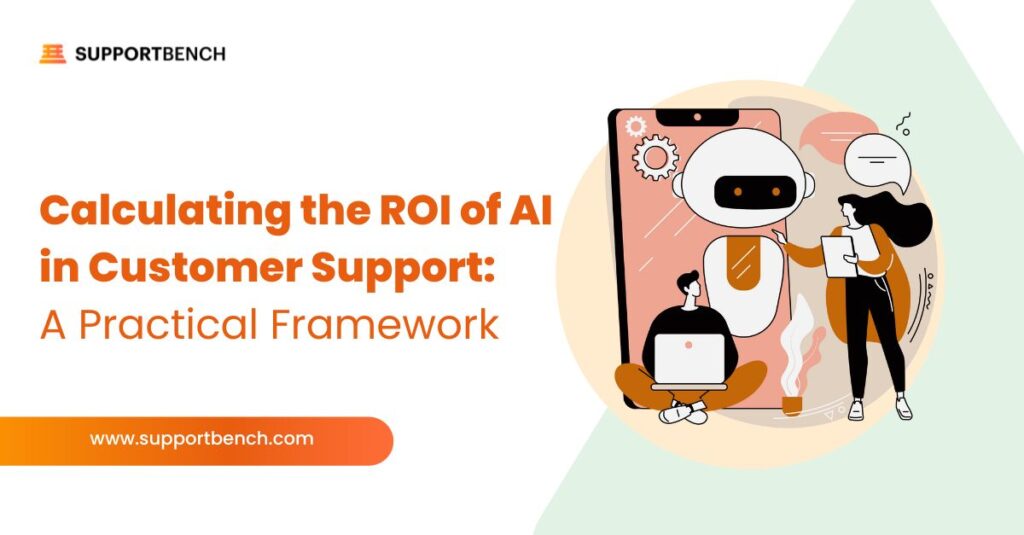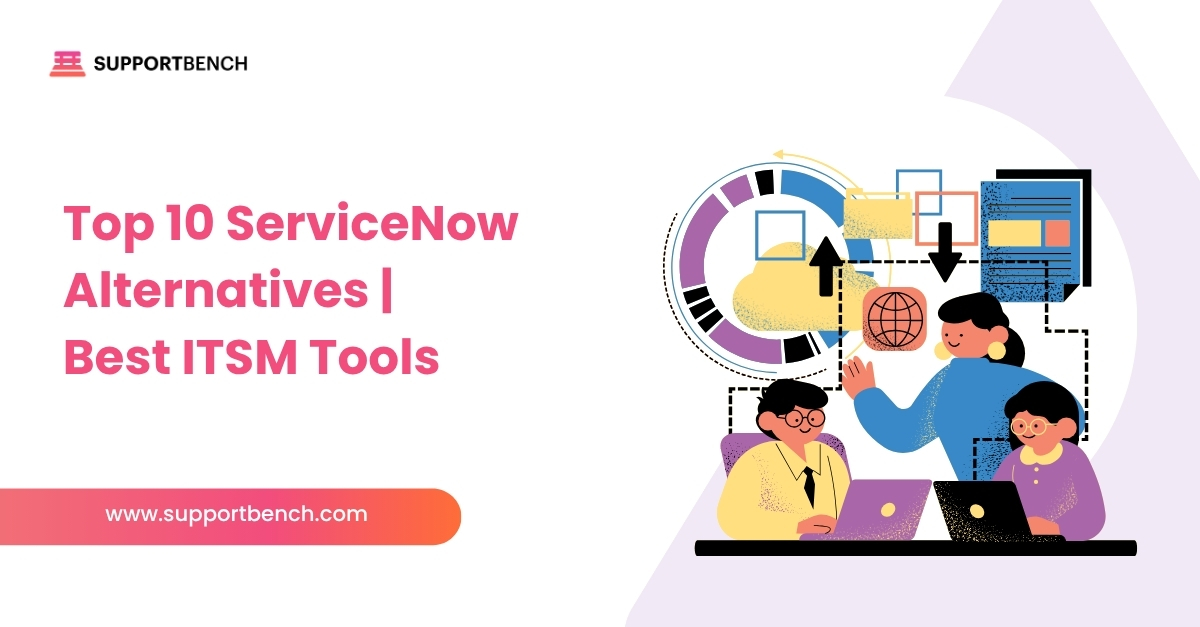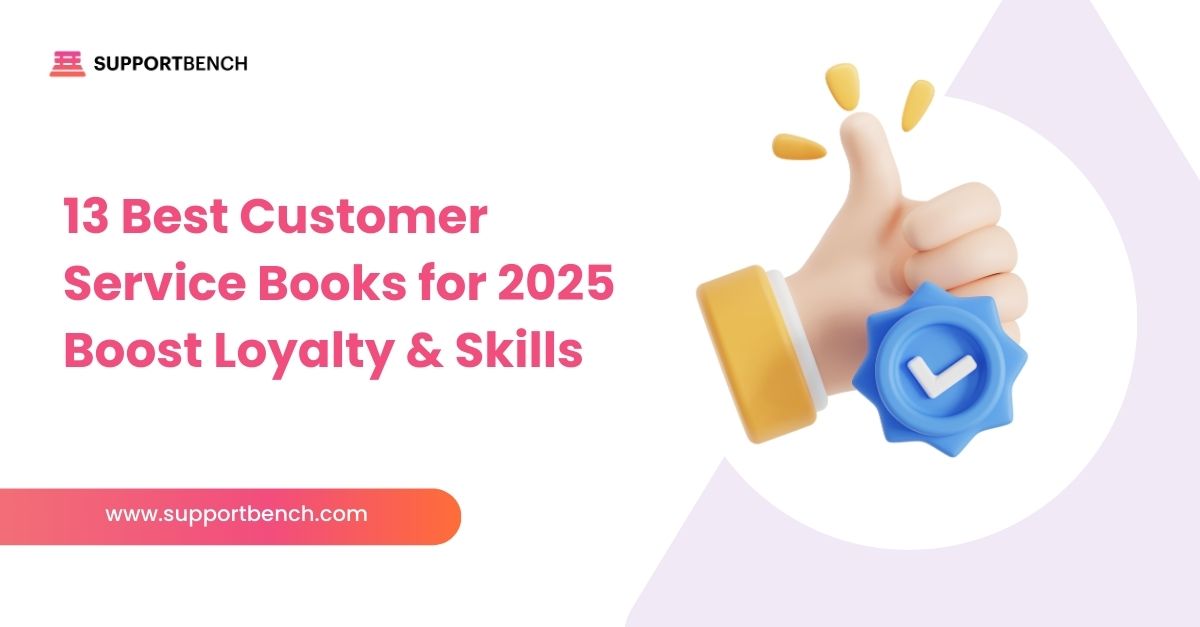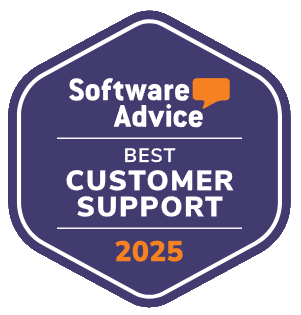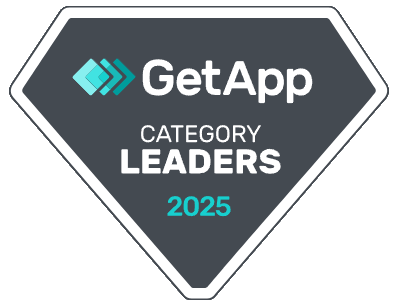Implementing Artificial Intelligence within your customer support operation is a significant strategic decision. While the potential benefits – faster responses, smarter agents, happier customers – are compelling, securing budget and demonstrating value inevitably comes down to one critical question: What is the Return on Investment (ROI)?
For support leaders managing complex operations and high-value customer relationships, justifying the investment in AI tools requires moving beyond anecdotal evidence and presenting a clear, data-driven business case. This isn’t just about cutting costs; it’s about proving how AI enhances efficiency, improves quality, strengthens customer relationships, and ultimately contributes to the bottom line.
Calculating the ROI of AI can seem daunting. It involves quantifying both tangible cost savings and less tangible (but equally critical) value creation. This article provides a practical framework to help you identify the key levers through which AI delivers value, measure the impact, and build a compelling ROI calculation to justify your investment in modern AI-driven support platforms.

Beyond Cost Cutting: A Holistic View of AI Value in Support
While efficiency gains are a major part of the AI value proposition, it’s crucial to avoid a narrow focus solely on cost reduction, especially in sophisticated support environments. For organizations where support quality and accuracy are paramount, simply automating agents away isn’t the goal. In many contexts, particularly B2B, a wrong answer delivered by an automated system could lead to disastrous results – imagine AI incorrectly advising on a critical compliance setting or misquoting contract terms for a major client. The reputational and financial damage could far outweigh any perceived savings.
The ROI calculation for AI in these environments must emphasize empowerment and intelligence. enabling agents to work smarter, faster, and with more insight, while leveraging automation for consistency and efficiency in non-customer-facing tasks. The true ROI encompasses:
- Enhanced Productivity & Efficiency: Doing more with the same resources, faster.
- Improved Quality & Consistency: Reducing errors and standardizing processes.
- Increased Customer Retention & Loyalty: Creating better experiences that keep customers engaged.
- Actionable Operational Intelligence: Gaining deeper insights for better decision-making.
Identifying the ROI Levers: Where AI Delivers Measurable Value
Whether you oversee enterprise customer support, run a lean startup customer support team, or scale an SMB customer support operation, the same ROI levers apply.
To calculate ROI, you first need to pinpoint where AI is making a tangible difference. Here are the key areas:
1. Agent Productivity Gains (Working Smarter & Faster)
Reduced Average Handle Time (AHT): AI Agent Copilots significantly cut down the time agents spend searching for information in knowledge bases, past tickets, or CRM systems. By proactively surfacing relevant answers and suggestions, they reduce research time, allowing agents to resolve issues faster.
Faster Onboarding: Copilots act as virtual mentors, enabling new agents to find answers independently and become proficient more quickly, reducing training time and cost.
Improved First Contact Resolution (FCR): With immediate access to the right information, agents are better equipped to resolve issues completely on the first interaction. AI can also help measure FCR more accurately than traditional methods.
2. Operational Efficiency Through Smart Automation
Automated Task Handling: AI excels at automation that saves time and gives better analytics. This includes tasks agents typically perform manually (and might do inconsistently or incorrectly):
- Intelligent Triage: Auto-calculating priority based on sentiment, keywords, and customer value.
- Automated Categorization: Auto-assigning issue types or product categories based on content analysis.
- Auto-Tagging: Applying relevant tags for reporting without agent intervention.
Reduced Administrative Overhead: Automating these tasks frees up agent time for customer interaction and reduces the workload on team leads or dispatchers.
3. Self-Service Effectiveness (Case Deflection)
AI Chatbots (KB Bots): Intelligent bots connected to your knowledge base can handle a significant volume of customer inquiries directly through your support portal, deflecting them from reaching human agents. This is particularly effective for documented procedures, known issues, or common “how-to” questions, even complex ones involving API usage or specific configurations.
4. Enhanced Quality and Consistency (Leveraging Knowledge)
KCS Enablement: Implementing Knowledge-Centered Service (KCS) is vital for consistency but notoriously hard. AI dramatically makes KCS easy to implement. AI Copilots instantly surface existing knowledge, encouraging reuse. Furthermore, AI can assist in creating content – suggesting new articles based on resolved cases with a click, ensuring valuable solutions are captured fast, well-written, and documented to be published quickly internally and externally. This leads to more consistent answers across all channels (human and bot).
Reliable Automation: AI-driven automation for tasks like tagging or categorization is often more consistent and accurate than manual human input, improving data quality for reporting.
5. Improved Customer Retention and Loyalty
Proactive Issue Identification: Predictive CSAT/CES scores identify potentially dissatisfied customers before they complain or churn, even if they don’t complete surveys.
Targeted Customer Success Plays: These predictive insights make customer success incredibly easy to create playbooks on. Teams can proactively reach out to customers flagged by AI, understand their issues (aided by AI summaries), and take steps to retain them. Reducing churn, even slightly, has a massive impact, as acquiring a new customer is significantly more expensive than retaining an existing one. Bain & Company research highlights that increasing customer retention rates by just 5% can increase profits by 25% to 95% 1.
Better Customer Experience: Faster resolutions, consistent answers, and reduced effort all contribute to higher satisfaction and loyalty.
6. Actionable Insights and Better Decisions
AI-Driven Analytics: AI provides deeper analytics on everything, offering more accurate FCR measurement, comprehensive sentiment analysis via predictive scores, and identification of emerging issue trends.
Streamlined Quality Assurance (QA): AI can help flag interactions for QA review based on sentiment, complexity, or predictive scores, making the QA process more targeted and efficient.

Quantifying the Gains: Putting Numbers to the Benefits
Once you’ve identified the levers, the next step is to quantify the impact. This involves estimating the tangible savings and value generated.
Calculate Agent Time Savings:
- Estimate the average time saved per interaction due to AI Copilot assistance (reduction in AHT). Even saving 1-2 minutes per complex interaction adds up significantly.
- Estimate time saved per interaction due to automated tasks (tagging, categorization).
- Formula: (Avg. Time Saved per Interaction in Minutes) * (Number of Interactions per Period) / 60 * (Avg. Fully Loaded Agent Cost per Hour) = Productivity Cost Savings
Calculate Deflection Savings:
- Estimate the number of inquiries successfully deflected by AI chatbots per period.
- Determine your average cost per human-handled interaction (including agent time, overhead, etc.). While variable, industry estimates often range from 6 to 20+ for live interactions, depending on complexity.
- Formula: (Number of Deflected Interactions) * (Avg. Cost per Human Interaction) = Deflection Cost Savings
Estimate Value of Improved Retention:
- Determine your current customer churn rate.
- Estimate the potential reduction in churn rate due to proactive outreach fueled by predictive AI and improved CX (even a 0.5% – 1% reduction can be significant).
- Calculate the Average Lifetime Value (LTV) of your customer.
- Formula: (Number of Customers) * (Estimated Churn Rate Reduction) * (Avg. Customer LTV) = Value of Reduced Churn
Estimate Value of Faster Onboarding:
- Calculate the reduction in average time (in weeks or months) for a new agent to reach full productivity.
- Estimate the cost associated with this extended training/ramp-up period (salary, mentor time, lost productivity).
- Formula: (Reduction in Ramp-Up Time) * (Cost of Ramp-Up Period per Agent) * (Number of New Hires per Period) = Onboarding Savings
Acknowledge Harder-to-Quantify Benefits:
While difficult to assign a precise dollar value, don’t ignore benefits like improved agent morale (leading to lower attrition), enhanced brand reputation from better CX, and the value of improved operational insights for strategic planning. Mention these as qualitative benefits supporting the investment.
Calculating the ROI
Once you have quantified the gains (benefits) and know the cost of the AI solution (software licenses, implementation, training), you can calculate the ROI.
- Total Gain = Productivity Savings + Deflection Savings + Reduced Churn Value + Onboarding Savings + (Other Quantified Benefits)
- Total Cost = Software Costs (Annual/Monthly) + Implementation Costs (One-time/Ongoing) + Internal Training/Admin Time Costs
- Simple ROI Formula:
ROI (%) = [(Total Annual Gain – Total Annual Cost) / Total Annual Cost] * 100% - Payback Period:
Payback Period (Years) = Total Initial Investment Cost / Total Annual Gain
(This tells you how quickly the investment pays for itself)

Building Your Business Case: Presenting the Numbers
A structured business case is essential for securing buy-in. Include these key sections:
- Executive Summary: Briefly state the problem, proposed AI solution, key benefits, expected ROI, and recommendation.
- Problem Statement: Describe the current challenges (e.g., high AHT, inconsistent answers, missed retention opportunities, KCS struggles). Use existing metrics.
- Proposed Solution: Introduce the AI platform and specific features (Copilot, Bots, Predictive Analytics, Automation) that address the problems.
- Costs: Detail the investment required (software licenses, implementation fees, internal resources).
- Benefits & ROI Calculation: Clearly show the quantified benefits (using the calculations above) and the resulting ROI percentage and payback period. Include qualitative benefits.
- Risks & Mitigation: Acknowledge potential risks (e.g., adoption challenges, data quality issues) and how you plan to mitigate them.
- Implementation Plan & Timeline: Outline the key steps and expected timeline for deployment and achieving results.
- Recommendation: Clearly state the request for approval and budget.
Illustrative ROI Scenario: “Innovate Solutions Inc.”
Let’s imagine Innovate Solutions, a provider of complex enterprise software:
- Team: 50 Support Agents
- Interactions: 10,000 complex interactions/month
- Avg. Agent Cost: $70/hour (fully loaded)
- Avg. Cost per Interaction: $15
- Avg. Customer LTV: $50,000
- Current Churn: 5% annually (on 1,000 clients)
- AI Platform Cost: $100,000 annually + $20,000 implementation
- Estimated AI Impact:
- AHT Reduction (Copilot): 1.5 minutes/interaction
- Automation Time Saving (Tagging/Routing): 0.5 minutes/interaction
- Bot Deflection: 10% of interactions (1,000/month)
- Churn Reduction (Predictive Insights): 0.5%
- Calculations:
- Productivity Savings: (2 min saved * 10,000 interactions/mo * 12 mo) / 60 * ($70/hr) = $280,000 / year
- Deflection Savings: (1,000 deflected/mo * 12 mo) * $15/interaction = $180,000 / year
- Reduced Churn Value: (1,000 clients * 0.005 churn reduction) * $50,000 LTV = $250,000 / year
- Total Annual Gain: $280k + $180k + $250k = $710,000
- ROI (Year 1): [($710,000 – $120,000) / $120,000] * 100% = 492%
- Payback Period: $120,000 / $710,000 = ~0.17 years (or ~2 months)
(Note: This is a simplified example. Your numbers will vary based on your specific context, but the framework remains the same.)

Investing in Intelligent Support
Calculating the ROI of AI in customer support is more than an accounting exercise; it’s a strategic imperative. By moving beyond simple cost-cutting and quantifying the impact on agent productivity, operational efficiency, knowledge management, customer retention, and actionable insights, you can build a powerful case for investing in intelligent support platforms.
AI tools like Copilots, Bots, Predictive Analytics, and Automation aren’t just features; they are engines for transforming your support operation into a more efficient, consistent, proactive, and value-driven function. By diligently identifying the levers, measuring the impact, and presenting a clear business case, you can demonstrate that investing in AI is not just expenditure – it’s a high-return investment in the future success of your support team and your entire organization.


